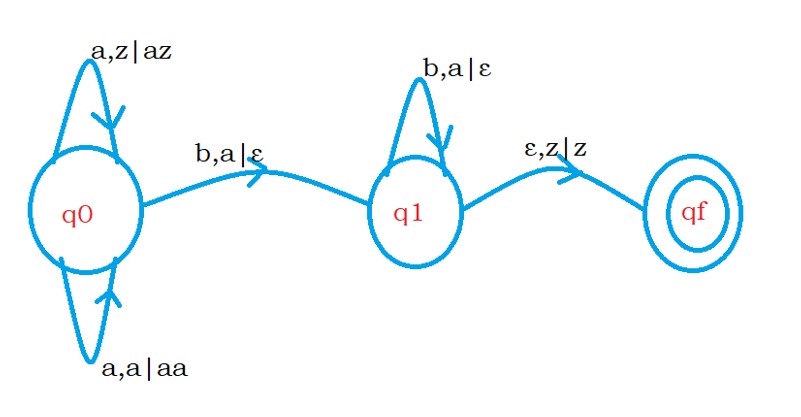Instantaneous Description of PDA
In this class, We discuss the Instantaneous Description of PDA.
For Complete YouTube Video: Click Here
The reader should have prior knowledge of push-down automata. Click Here.
The instantaneous description is an informal notation that explains how a push-down automata computes the given string.
Example: We take a language L = {aⁿbⁿ where n >0}
We constructed push down automata for the language L in the last class.
The below diagram shows the PDA for language L.

On state q0, if the input symbol is a and the stack top is z. we push ‘a’ onto the stack.
The push operation is shown as az. The top two symbols of the stack are az.
We do the pop operation on state q0 if the input symbol is b and the stack top is a.
The pop operation is shown using epsilon.
On state q1, if we see the input symbol epsilon and the stack top is z, we do no operation.
The no operation is shown using the stack top symbol. z in our example.
Instantaneous description of a PDA is defined using a triple (q, w, s).
q is the current state.
‘w’ is the remaining input string.
‘s’ is current stack content.
ID(q0, aaabbb, z).
aaabbb is the input string.
‘z’ is the stack symbol.
How we process the input string aaabbb is shown using the instantaneous description.
On state q0, the input symbol is a, and the stack top is z. we push ‘a’ onto the stack.
The above operation is shown using instantaneous description ID(q0, aabbb, az).
Similarly, process the remaining input string.
ID(q0, abbb, aaz)
ID(q0, bbb, aaaz)
ID(q1, bb, aaz)
ID(q1, b, az)
ID(q1, ε, z)
ID(qf, , z)
Finally, we moved to the final state qf.
